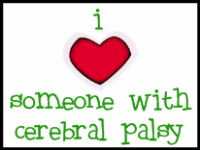
Welcome to our series on Meal Planning! If you are like us, we like to plan but are not always into cooking a million meals on the weekends! (We give props to those of you who do though!) So, come Monday we are usually trying to figure out what's for dinner!
This series focuses on easy to prepare meals that picky eaters will enjoy too! We are also focusing on how to make them allergy free - or give allergy free options!
If you have any ideas that you would like to share...we would like to post your recipe and give you your own blog post here on the Knowledge Safari blog! Just send an email to blog@knowledgesafari.com !
Recipe from:
Gluten-Free Matzoh Ball Soup Recipe
By Teri Gruss, MS, About.com Guide
By Teri Gruss, MS, About.com Guide
Gluten-free matzoh ball soup is a delicious, homemade chicken soup made with fresh stock, loaded with fresh vegetables and studded with homemade gluten-free matzo balls.
Make your own gluten-free oat matzoh crackers which are used to make fresh gluten-free matzoh meal- the key ingredient in gluten-free matzo balls. If you prefer, you can purchase gluten-free matzoh crackers to use in this recipe.
First things first, make one recipe of Low Fat Kosher Chicken Soup from About.com Guide to Low Fat Cooking, Fiona Haynes.
Prep Time: 30 minutes
Cook Time: 1 hour, 45 minutes
Total Time: 1 hour, 75 minutes
Cook Time: 1 hour, 45 minutes
Total Time: 1 hour, 75 minutes
Ingredients:
1 recipe Low Fat Chicken Soup (link below)
1 recipe Gluten-Free Oat Matzoh Crackers (link below)
For Matzo Balls:
1 1/4 cup fresh gluten-free matzoh meal (use about 1-1 1/2 8-inch gluten-free matzoh crackers to make matzoh meal)
4 large eggs, separated
4 tablespoons gluten-free chicken stock (use fresh stock from the chickene soup)
1 tablespoon light olive oil
1/4 - 1/2 teaspoon salt (to taste)
1/4 teaspoon pepper
1 recipe Low Fat Chicken Soup (link below)
1 recipe Gluten-Free Oat Matzoh Crackers (link below)
For Matzo Balls:
1 1/4 cup fresh gluten-free matzoh meal (use about 1-1 1/2 8-inch gluten-free matzoh crackers to make matzoh meal)
4 large eggs, separated
4 tablespoons gluten-free chicken stock (use fresh stock from the chickene soup)
1 tablespoon light olive oil
1/4 - 1/2 teaspoon salt (to taste)
1/4 teaspoon pepper
Preparation:
Make one recipe of Low Fat Kosher Chicken Soup and one recipe of Gluten-Free Oat Matzoh Crackers. for convenience both recipes can be made up to 2 days before serving your matzo ball soup.
Make one recipe of Low Fat Kosher Chicken Soup and one recipe of Gluten-Free Oat Matzoh Crackers. for convenience both recipes can be made up to 2 days before serving your matzo ball soup.
To make gluten-free matzo balls-]Separate egg whites and yolks. Place egg whites in a mixing bowl and whip until stiff peaks form.
In a separate bowl, whisk egg yolks, chicken broth and olive oil.
Place gluten-free oat matzoh crackers in a plastic bag and use a rolling pin to crush to fine crumbs. For finer crumbs, place crushed crackers in a clean coffee bean grinder and pulse 2 times. Add salt and pepper to crushed matzoh cracker crumbs and stir to combine.
Use a large spatula to gently fold half of the cracker crumb mixture into the egg whites. Next, gently fold half of the egg yolk mixture into the egg white - cracker crumb mixture. Repeat with remaining cracker crumbs and egg yolk mixture.
Refrigerate for at least 30 minutes before cooking
In a separate bowl, whisk egg yolks, chicken broth and olive oil.
Place gluten-free oat matzoh crackers in a plastic bag and use a rolling pin to crush to fine crumbs. For finer crumbs, place crushed crackers in a clean coffee bean grinder and pulse 2 times. Add salt and pepper to crushed matzoh cracker crumbs and stir to combine.
Use a large spatula to gently fold half of the cracker crumb mixture into the egg whites. Next, gently fold half of the egg yolk mixture into the egg white - cracker crumb mixture. Repeat with remaining cracker crumbs and egg yolk mixture.
Refrigerate for at least 30 minutes before cooking
For easy, round matzoh balls, use a 1/8 cup capacity ice cream scoop to form balls or use form matzoh balls using a rounded heaping tablespoon of matzoh dough.
Drop matzoh balls into simmering chicken soup and cover with a tight-fitting lid. Simmer for 30 minutes and don't lift the lid to peak!Yield - 10 1/8th cup matzoh balls / 4 to 6 servings
Drop matzoh balls into simmering chicken soup and cover with a tight-fitting lid. Simmer for 30 minutes and don't lift the lid to peak!Yield - 10 1/8th cup matzoh balls / 4 to 6 servings
Reminder: Always make sure your work surfaces, utensils, pans and tools are free of gluten. Always read product labels. Manufacturers can change product formulations without notice. When in doubt, do not buy or use a product before contacting the manufacturer for verification that the product is free of gluten.





































